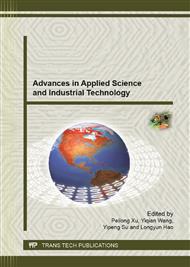p.545
p.549
p.553
p.557
p.561
p.565
p.570
p.574
p.578
The Applicated Comparation of Three Signal Analytical Methods for Ocean CSEM Signature
Abstract:
Sea is rich in oil and gas resources, the marine controlled source electromagnetic method (CSEM) is a kind of method seabed oil gas geophysical technology rising in recent years. Because of the problem of CSEM about the air wave in the shallow water, the research of time-frequnecy analysis technique is used to suppress the air wave in this paper. The basic idea is: because of the CSEM signals speed are different in the air and submarine, so the time which received by the receiving points are also different through these two kinds of ways. Using the time-frequency analysis technique and theoretical calculation, we can determine which part of the signal is spread over the ocean, so as to suppress the air wave effectively. This paper lists several methods of time-frequency analysis, such as Short-time Fourier transform, W-V distribution, Wavelet transform, Hilbert Huang transform. Through the time-frequency graph,we get the conclusion that HHT is better than others in concentration degree,and W-V distribution is better than STFT.Compared with the original signal, the time-frequency graph is the best in using Smooth Puseudo W-V Distribution.I have a detailed analysis about real case in using SPWVD at last.
Info:
Periodical:
Pages:
561-564
Citation:
Online since:
September 2013
Authors:
Price:
Сopyright:
© 2013 Trans Tech Publications Ltd. All Rights Reserved
Share:
Citation:


